2017 Mountain Snowmobile Shootout: Part III
Looking at four unique mountain snowmobiles
The snowmobiling world we live in, the products we ride, especially the 800cc and 850cc mountain-specific snowmobiles, change about every three- to four-years. Our compressed model year shootout schedule reflects a short riding-season window. We covered much in the previous two parts. You can read Part I here and Part II here. As of this writing, Arctic Cat released its Early Release M8000 Sno Pro 153 and 162; the 2018s are upon us. In this sport, no blinking is allowed.
Here in Part III, we provide our guest-test riders’ expert opinions on Snowmobile.com’s remaining four snowmobiles; Parts I and II covered the Ellite 3 for model year 2017: Ski-Doo Gen-4 REV Summit X 165, Arctic Cat Mountain Cat 162, and Polaris Pro-RMK 163 LE. These remaining four are: Arctic Cat King Cat, Arctic Cat M8000 Limited 162, Polaris Pro-RMK 174 LE and Arctic Cat M6000 Sno Pro 153.
Yes, Arctic Cat shipped to us this season four mountain units, and like our two Polaris Pro-RMKs and lone Summit X, we rode the four Cats hard. Speaking of our Cats, the Mountain Cat and M8000 Limited are orphans as of this writing. Gone is the ProClimb chassis and Arctic Cat-designed and Suzuki-built 800 H.O. replaced by an all-new Ascender chassis and Arctic Cat-designed and -built 800 two stroke twin.
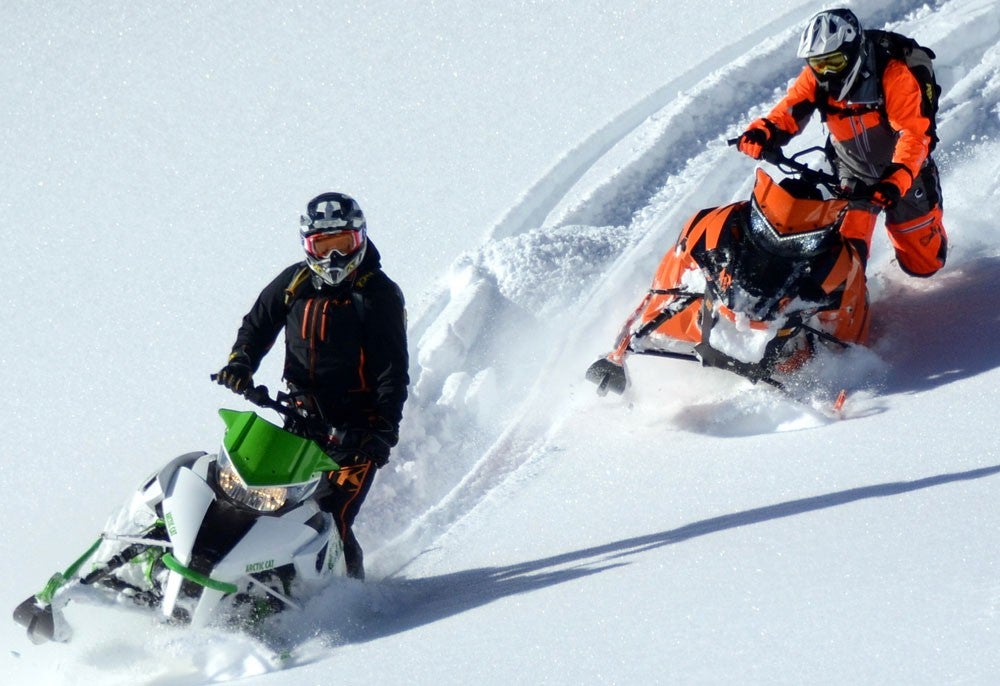
The M6000 (left) and King Cat (right) are as dissimilar as they come. But similar is sidehilling ease.
Given this is the final feature to our model year 2017 Powder Sled Shootout, we express our thanks to Ski-Doo, Polaris and Arctic Cat for keeping our high mountain corral adequately filled with snowmobiles. The greatest job on this third rock from the sun is that of snowmobile journalist/evaluator, and having great OEMs to work with.
Let’s dial in our six guest-test riders’ evaluator-opinions. We’ll also layout some comparative thoughts between the Pro-RMK 174 LE to the 163 Pro-RMK LE; the M8000 Limited 162 to the Mountain Cat 162; and for fun from two extremes, the bad turbo King Cat to the baby 8 M6000 Sno Pro. The latter two only because these two are liken to a .50 caliber hunting rifle versus a .223 AR.
Pro-RMK 174 LE
Mark Radford
“This was not my favorite snowmobile to ride. It is too long to ride in technical terrain. It needs more power to turn the long track. It did hold a long sidehill line, though. The snowmobile is so planted I could ride it into my 90s.”
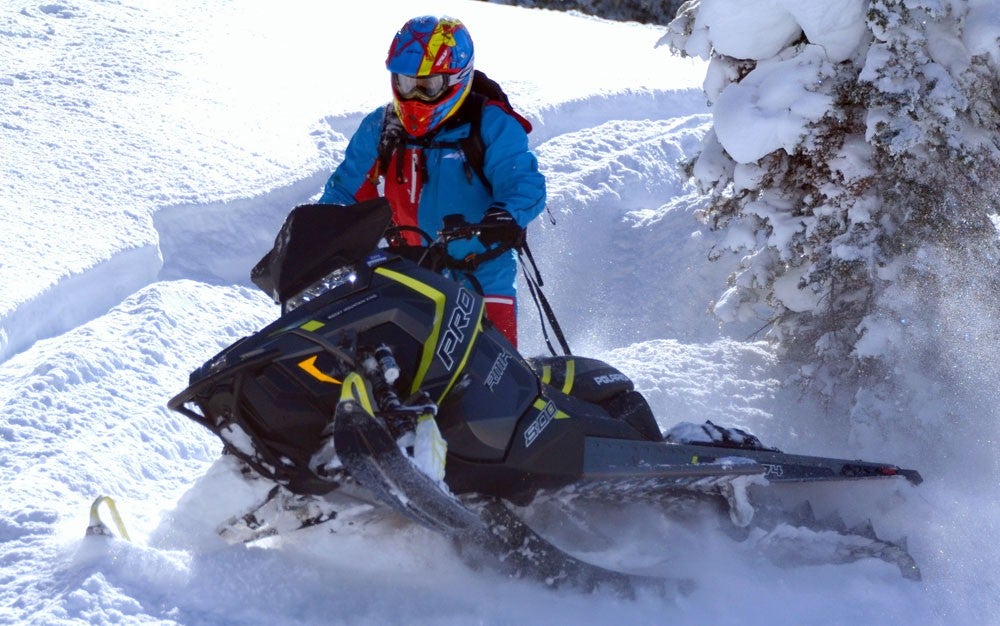
Planted hard into a hillside as it navigates around a tree well, the Pro-RMK 174 LE is as stable as stability can become.
Troy Johnson
“Easy snowmobile to ride. It floats much better than the Pro-RMK 163. The rear suspension did not work with the long track as well as I expected. I do like its ease of maintenance, to access the motor, spark plugs and engine components.”
Roger Raymond
“It seems that people either love or hate extra-long tracks. I love them. While I would never say I don’t know it’s there, I will say I don’t have a hard time turning it, even in tight trees. Early in the shootout, this was my favorite sled. The powder was deep, and I felt it was an advantage. Later on when the powder wasn’t as deep, I started to second guess myself. Ultimately long tracks are great when you need them, but can feel like a bit of a handful when the powder isn’t deep. I think some suspension preload adjustments would improve its feel on firm snow. Since I try to limit my riding to deep powder, I love the 3” x 174” track. The 174 could use a few more horses; that would be welcome.”
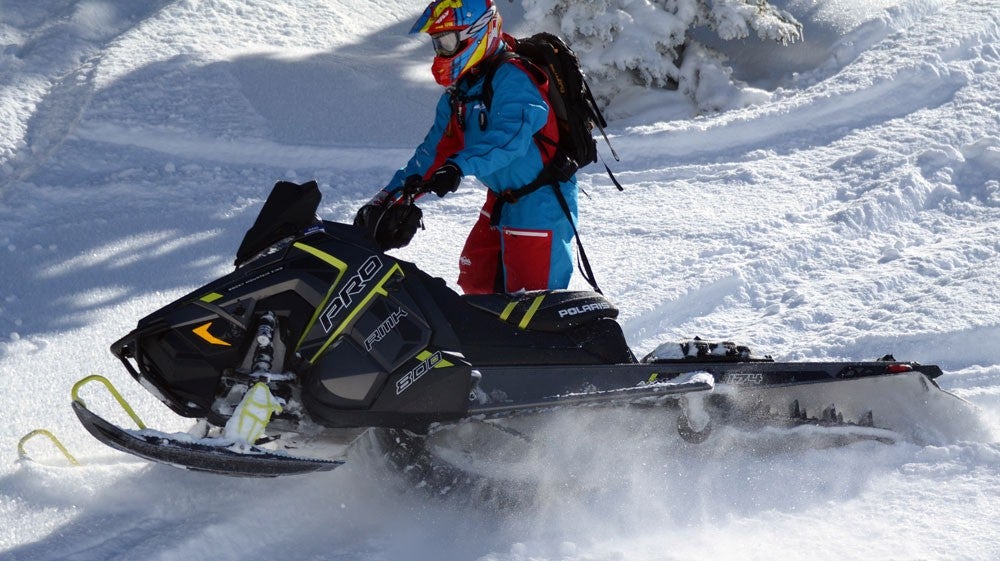
With its long Pro-RMK torso, the 174 LE with its Series 7 track is a forgiving snowmobile. Baby Boomers rejoice…this is for you.
Alan Myler
“The 174 is not quite as ‘flickable’ as the Pro-RMK 163, but the 174’s flotation is noticeably better in the deep stuff. The 174, though, needs more horsepower to compete with the Ski-Doo and the Arctic Cat 800s. Again, I do like the 174’s floatation.”
Brent Burton
“The Pro-RMK 174 LE holds the steepest lines and has a wide sweet spot for sidehilling. The 174 track provides additional flotation and climbing ability, but at the expense of quickness and responsiveness in transitions. My favorite characteristic is its ability to easily sidehill very steep terrain. As with the 163, I’m not a big fan of the Pro-RMK runningboards.
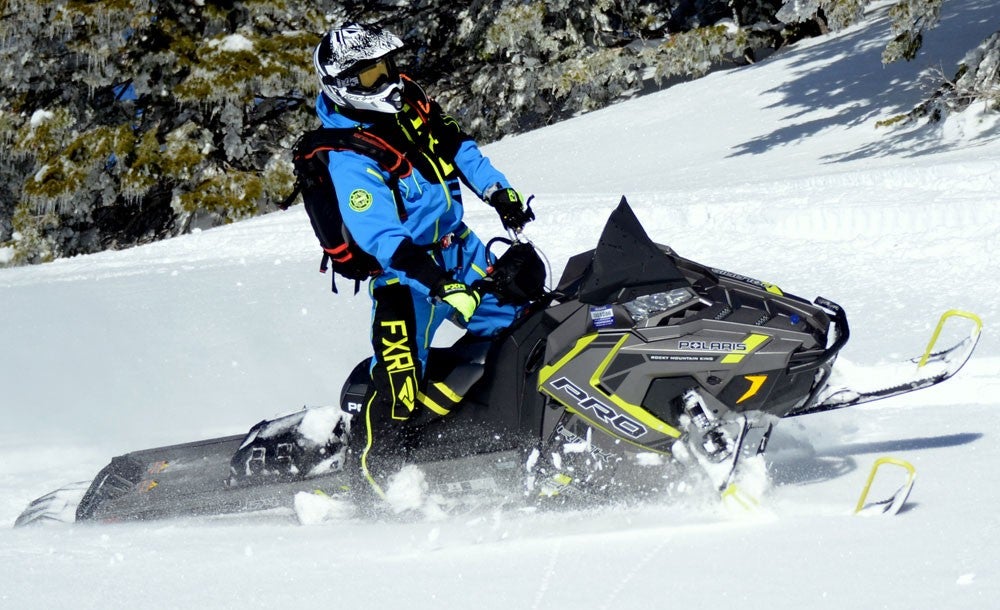
The 174 Pro-RMK became a fast favorite. Many debated it. Too planted. Too forgiving. Which is it? We like its tame attitude.
Kevin Allred:
“This sled has awesome snow hook up. It just goes and goes up a mountain; its ability to power through super deep snow is for real. In our timed races, its hole-shot was amazing, as well at its top speed, near that of the 163 Pro-RMK. For me, I complain about too much weight transfer on the 160-plus snowmobiles, but the 174, it needs some. But, this is a fun and planted snowmobile; it’s a deep-snow goer.”
King Cat
Mark Radford
“What a beast. Fast. My only nit is that it needs a vertical steering post like the M8000, but lower, and a shorter and not so tall seat.”
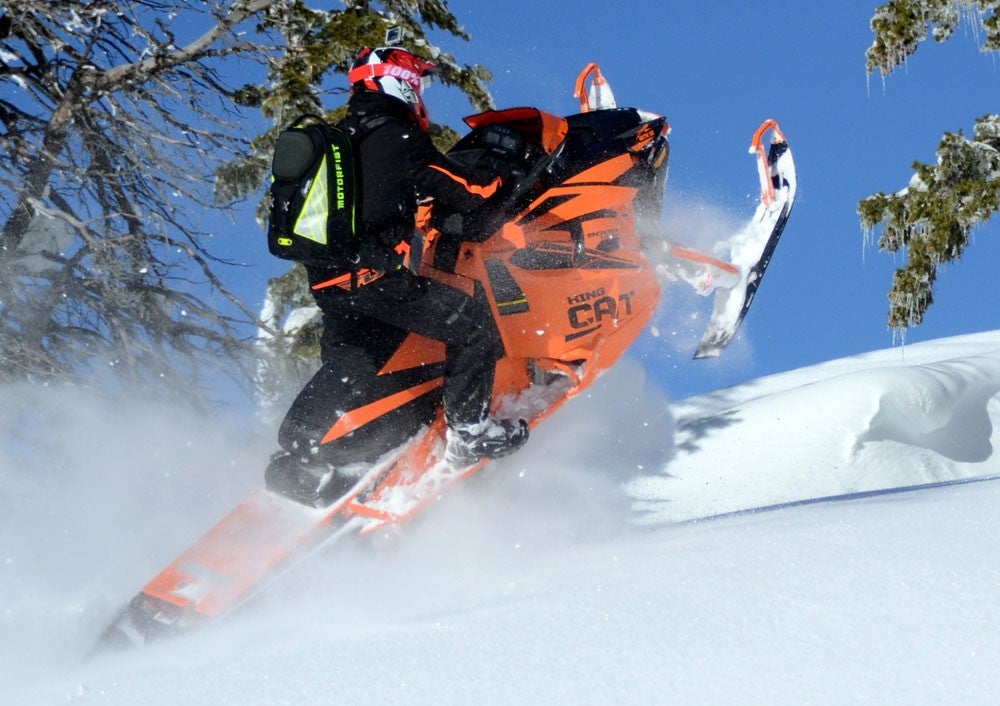
Will it climb? Oh baby, yes it will. The King Cat, with its 200 horsepower, plays no favorites to a mountain.
Troy Johnson
“Loved the power. It definitely is a climber and can go through the deepest powder. I hate the steering and handlebar setup; it was more bothersome than the King’s weight. If it had the true ProClimb or Viper M-TX steering, it would be more enjoyable to ride.”
Roger Raymond
“When I first threw a leg over the new King Cat, I had no clue what I was getting into. I’ve ridden several four strokes, and while some of the highly modified versions can be pretty exciting, in stock form, they more closely resemble old Cadillacs; big, smooth and fun to drive – as long as you don’t go off trail. When I grabbed the throttle on this monster and headed up hill, I thought I was going to pull it over on top of me. It’s amazing how smooth the power is and how it gained speed as I progressed up a hill. The Mountain Cat chassis handles the huge powerplant very well. It is still heavy, but very fun to ride. I could actually see myself with one of these. The King Cat needs wider skis to handle the weight, a vertical steering post and a way to keep snow from sealing off the front radiator; to prevent moto overheating.”
Alan Myler
“For my type of riding, this would be my choice – if it was lighter; it needs to lose about 100 pounds, I was more tired at the end of the day riding it than from riding an 800.”
Brent Burton
“The Turbo King Cat was a surprise. I haven’t spent time on turbos, so the added capability the big horsepower provides in climbing scenarios was surprising. The King Cat will climb even after momentum is lost, so it is clear the chassis hooks up well and keeps digging. The steering was quite difficult and there is obviously a large weight penalty. Sidehilling works quite well once the sled is on edge, but transitions are difficult in many snow conditions. For me, I recommend widening the chassis to the widest position and install an aftermarket ski.
Kevin Allred
“What a powerhouse. Cat did well by dropping the boosted Yamaha motor into the Mountain Cat chassis – it works. What a great looking sled. In our testing, when it came to long steep pulls, the King Cat was defiantly ‘King;’ 200-plus horsepower in the Mountain Cat made it seem unstoppable. Yes, there’s some extra pounds, but if you are ‘that guy’ that loves horsepower, then the King is your ride; best version of factory boosted four stroke power yet. One thing, though, the steering post needs to go vertical.
M8000 Limited 162
Mark Radford
“I really liked the top end power of this sled. It was, however, the heaviest to maneuver. It took too much physical energy to drive it around. I feel the seat needs to be shorter and not as tall, and the handlebars need a shorter post. I do like the three-inch PowerClaw track.”
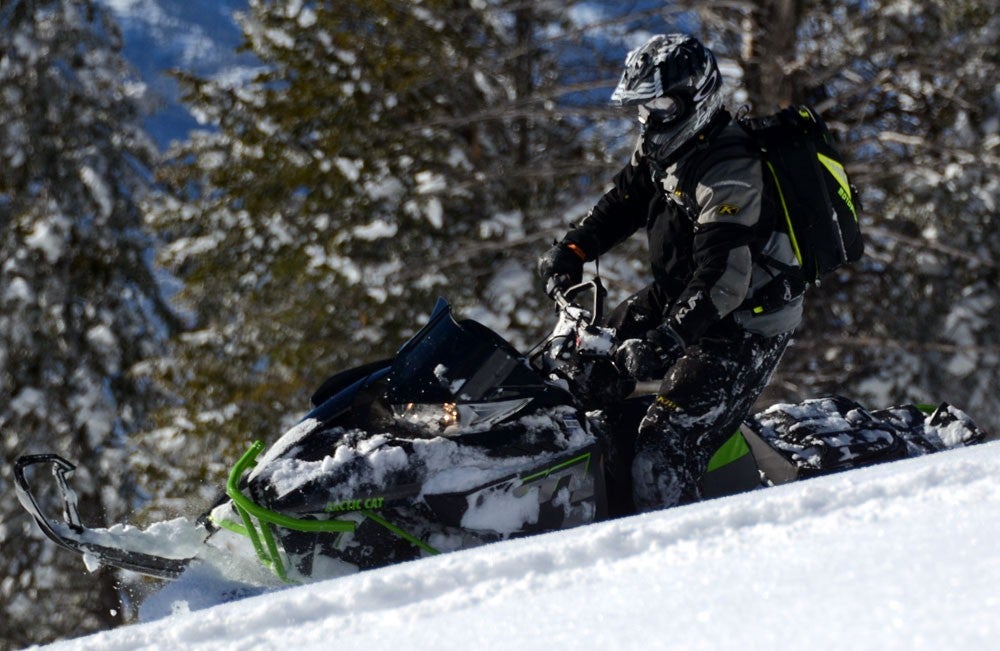
Good looking in every way. Nimble in every way. The strong and powerful M8000 Limited will fall away, giving way to the new Ascender M8000.
Troy Johnson
“I like the motor’s power, but I can’t not stand its runningboards.“
Roger Raymond
“When it comes to reliable power and great suspension, the M8000 has earned its reputation. Although not quite as mountain- friendly as the Mountain Cat sibling, in experienced hands it has proven to be a very effective package. The more time I spent on it, the more confidence I gain in it. It is smooth on the trail and has reliable power. I think a weight loss and move the center of gravity back would be fantastic. The improvements made to the Mountain cat are a great start.”
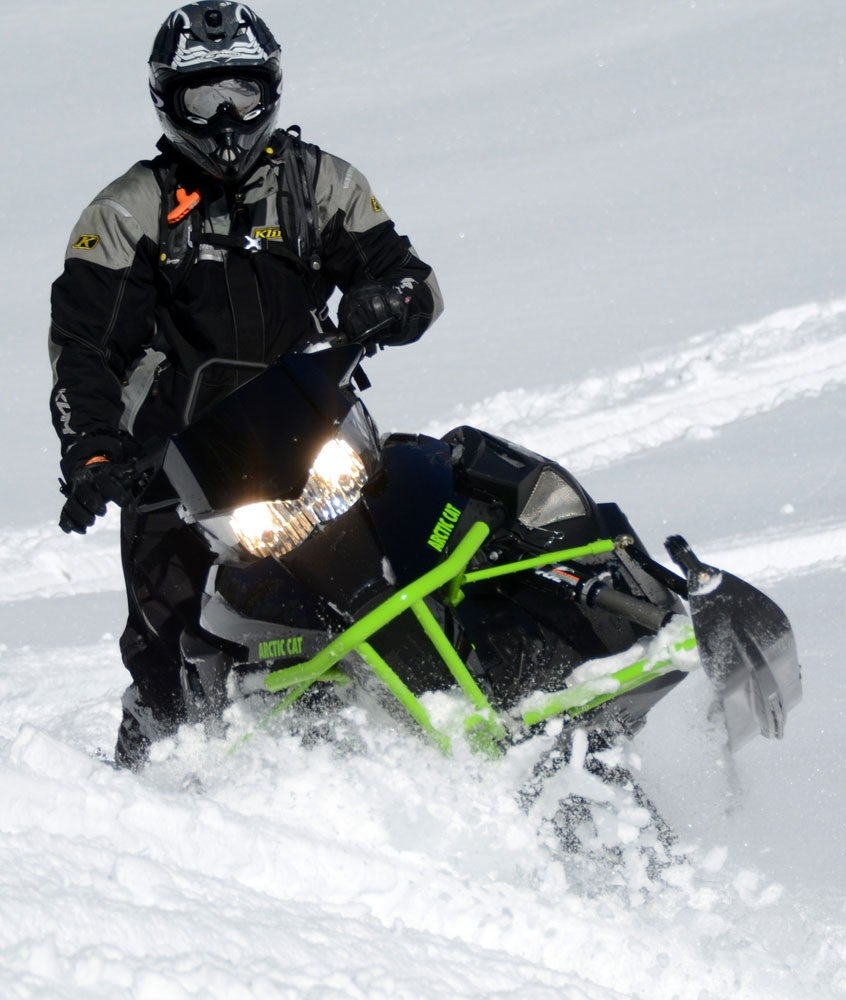
No one argues down the M8000 Limited 162’s fine track and Suzuki power. The Limited, though, was not limited to weight. It had plenty for an 800.
Alan Myler
“Had a heavy feel to it, but the more I rode it, the more I liked it. But, it needs to lose some weight; the Mountain Cat chassis actually feels lighter. I did like the PowerClaw track; after losing momentum on a climb, it continued to hook up.”
Brent Burton
“The M8000 Limited is a great all-around chassis with a very reliable motor. This sled is similar to the Mountain Cat, overall, but the Mountain Cat’s modified chassis is superior in deep snow and climbing situations. I like the overall handling of the M8000 and its predictability when sidehilling. Yet, I’m not a fan of the Arctic Cat ski. Most riders change these out for an aftermarket ski or Polaris’ Gripper mountain ski, so this should say something about the stock ski.”
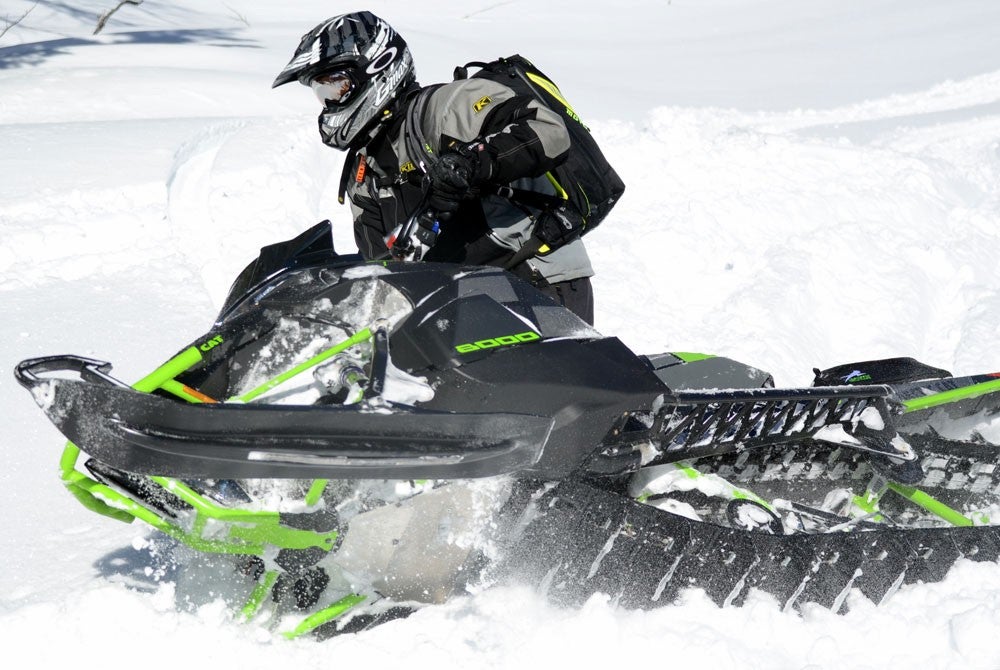
The ProClimb chassis is nimble, but for the Limited, it was not as nimble as the Mountain Cat. The ski on this Cat was scoffed by our many riders.
Kevin Allred
“I love the black on black on gray with high-vis green highlights – a good looking sled; the tunnel bag on the back is very functional. Great motor, track and front suspension, but what to say—struggling here – OK, the Mountain Cat chassis stole the show for me. The Limited needs to move to the Mountain Cat chassis.”
M6000 Sno Pro
Mark Radford
“For a 600, this snowmobile is fantastic. It gets up onto the snow very well and makes good sidehill cuts. It is a fun snowmobile. Like the other ‘M’ models from Arctic Cat, it needs a lower handlebar post.”
Troy Johnson
“The switches that control handlebar heat and throttle lever heat are in the way, I often hit them and turned off the heat, this was annoying.”
Roger Raymond
“What a fun little giant. After I got use to the slight power and track disadvantage, it was amazing where I was rode this mountain sled. I think the 600s are underrated; this 600 would be the best choice for many riders. Its smooth power is ample to get the job done, and less intimidating than an 800. The inherent lightweight engine does very well in the powder and on the sidehill. I think the M6000 could spin a longer track of same lug height.”
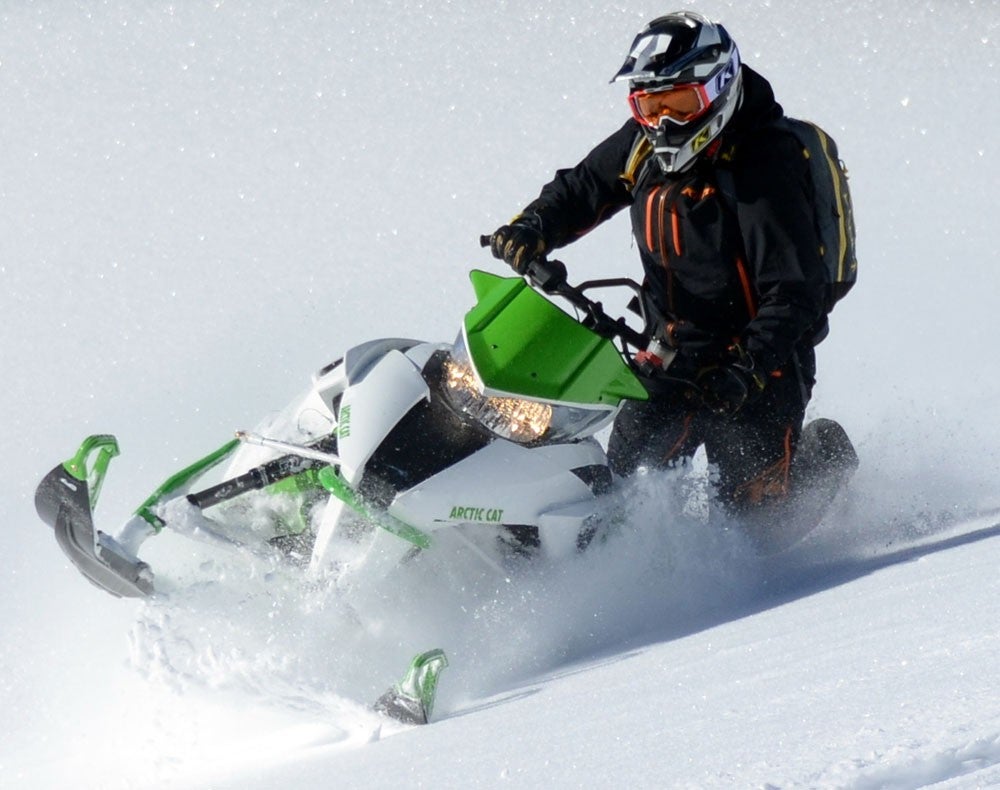
With squared-up shoulders, feet on runningboards, the M6000 Sno Pro 153 is more than just a beginner’s mountain snowmobile.
Alan Myler
“This was the most fun snowmobile to ride; I actually rode the M6000 for a while thinking it was the Cat 800 Limited. Though a 600, I think it has the potential for more horsepower to make it hang more with the 800s.”
Brent Burton
“The M6000 is a good all-around snowmobile. It feels similar to the M8000, especially for bottom end responsiveness, but you can definitely tell a difference in deep snow and climbing situations. But I come back to this…I’m not a fan of Arctic Cat’s mountain ski.”
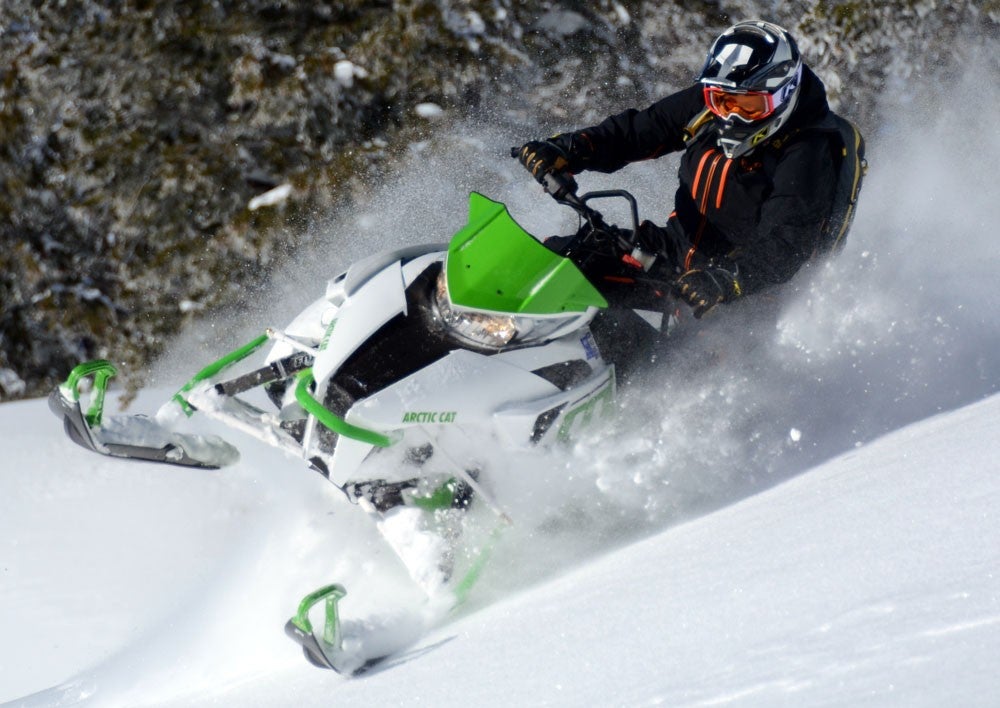
Diving down a hill is effortless as the ProClimb chassis gives the M6000 the nimbleness to be playful.
Kevin Allred
“I love putting a 600 in the mix of 800 class riding. I, or should I say we, liked putting this 600 where big 800s went; our M6000 was up to the task as it chased the 800s. It was not as fast, but it was always on the same hills. I heard positive comments from our test crew; some didn’t know, at first, they were riding a 600. What a compliment. Nice job M6000. For me, this needs to move to the Mountain Cat chassis for 2018.”
Overall
Pro-RMK scored high points for its deep-snow mobility. It was also adored for its color scheme. But, our riders were split on its “planted” feel. Some felt the 163 was more nimble, as it should be, but the 174 needs a tad bit more lift; which can be managed by rear suspension adjustments. Given that, the 163 Pro-RMK and the 174 Pro-RMK received a common hit: it needs more horsepower.
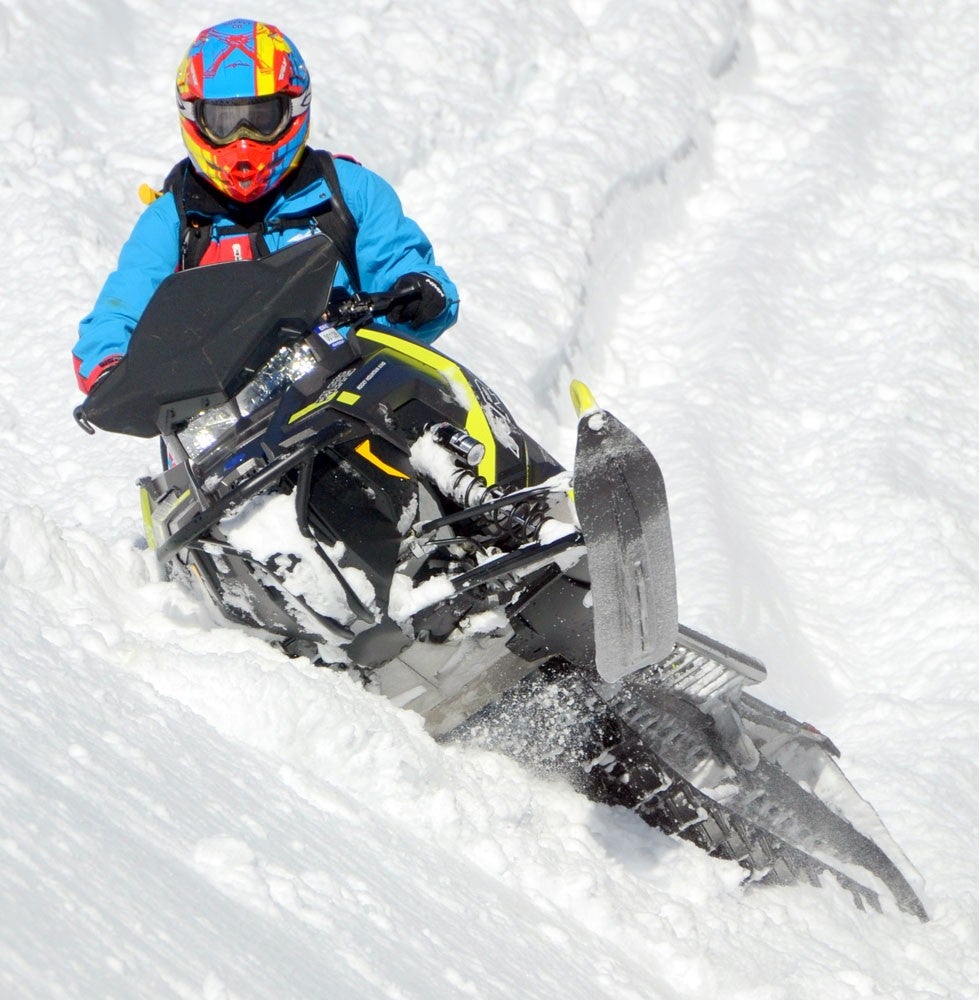
Holding that sweet line, the Pro-RMK 174 is as tight as a drum on a hillside. One must work to wash it out.
The King Cat scored high points for its power and being in the Mountain Cat chassis, but the common complaint, which I agree with, is it steering post. We know it is hard to stuff a vertical post behind a big four stroke motor, but good engineering can do this. The King Cat needs a more vertical post, and one that is two to three inches taller; its heft needs more arm leverage. On the other hand, being the King Cat is in the Mountain Cat chassis, the big King was a pleasure to toss around in the deep pow pow.
The M8000 Limited and M6000 Sno Pro had one negative common theme, their skis. Also, though both the M8000 and M6000 were praised for their finesse technical mountain riding, all riders felt each would gain more respect if in the Mountain Cat chassis. We know the new 2018 Ascender chassis is on the horizon for 800s, but will it be a match for the M6000? Time will tell. We are hoping it will. The M8000 Limited also was knocked down for not being the Mountain Cat chassis, but gained credit for having motor oomph, though the motor is old. As you know, for 2018, the Suzuki is gone, replaced by Cat’s own C-TEC 800. The Limited was as controversial as the 174 Pro-RMK, loved for its power, cussed for not being in the Mountain Cat chassis. This all changes for 2018.
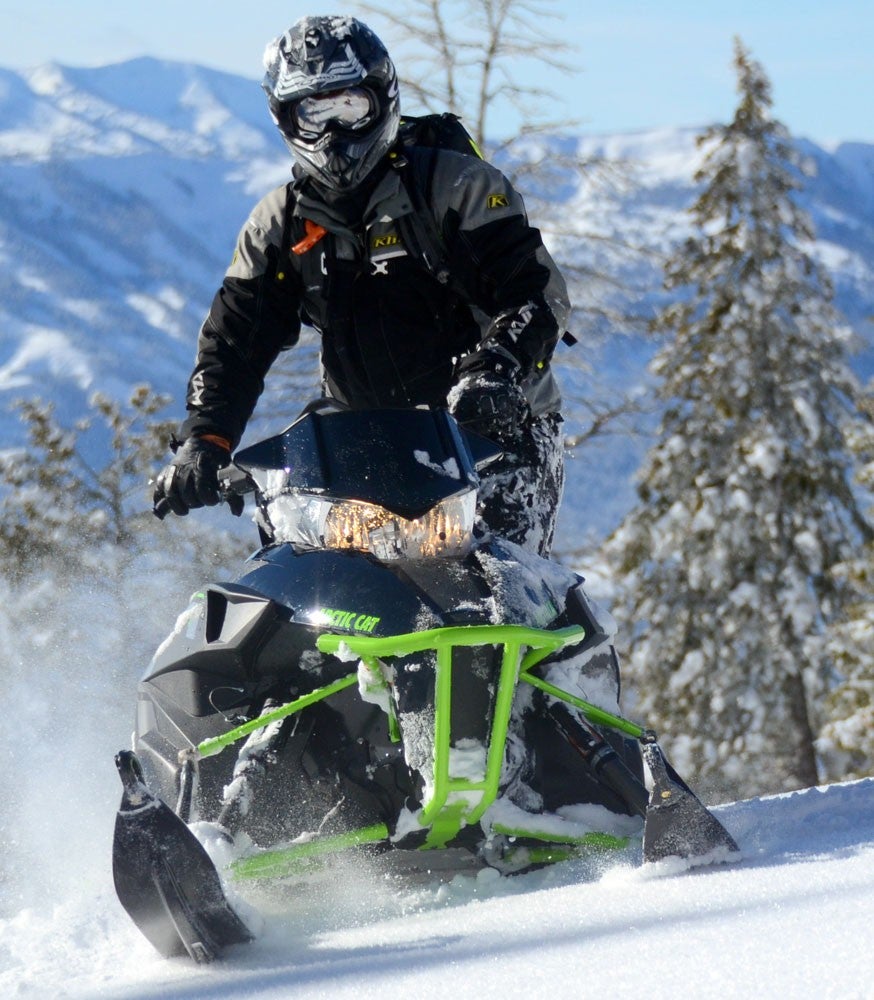
The M8000 Limited has seen its prime. It fell short to the 2017 Mountain Cat. But this prime Cat from 2016 remains a strong runner.
Now, for this Wester Editor I continue to give these fine guest-test riders room to layout their opinions, as they should. I may not agree, and that is the nature of mountain-riding diversity.
I agree the King Cat needs a vertical steering post. The King Cat’s power-to-weight, as 200 horsepower stays on the table through high-elevation clmbs, makes riding a two-stroke 800 wimpy work. For the 174 Pro-RMK, I agree it needs more horsepower. I don’t agree the 174 Pro-RMK is too planted; I like its feel and wouldn’t touch a thing.
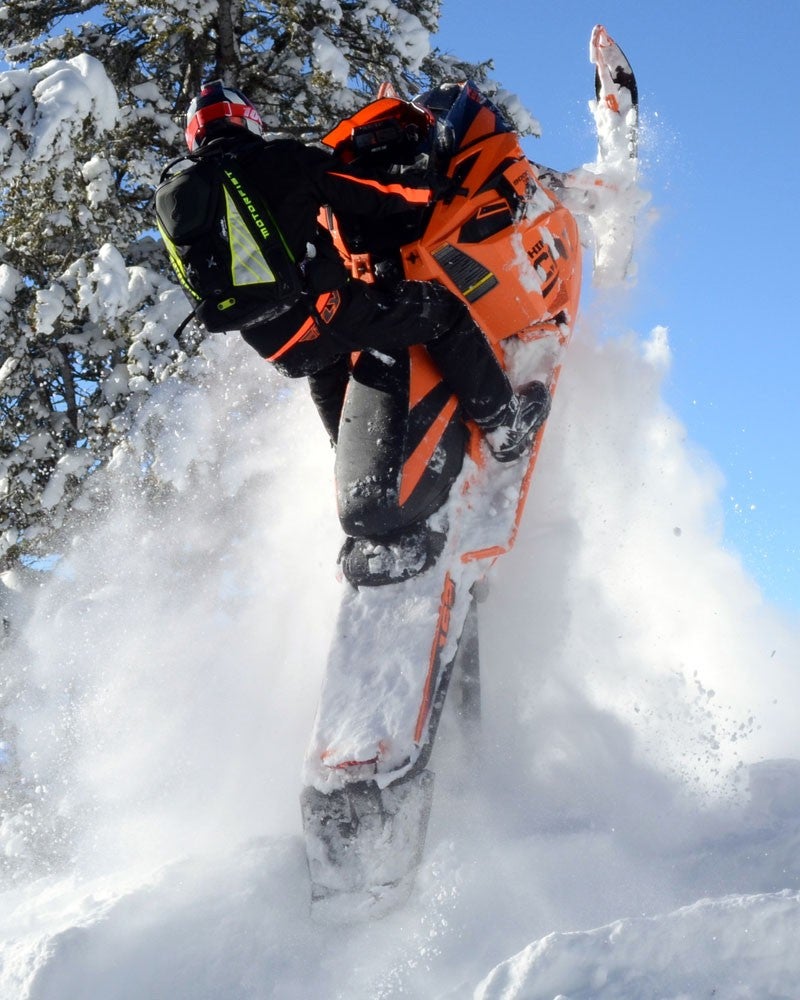
Fully loaded, the King Cat is over 600 pounds. Here is proof that power-to-weight is manipulated by turbocharging.
I agree the M6000 is a hard worker and agree it should move to the Ascender chassis. I agree with our evaluators’ comments on Cat’s mountain ski; though I praised it when first introduced, I believe it needs more depth and width. The M6000 and King Cat are non-comparable. Our riders could not find a way to pit one to the other, but the M6000 gained high praise for its can-do attitude.
For 2018, much will change. We predict the new Ascender chassis will make its way to more Arctic Cat mountain snowmobiles. We don’t know about Polaris, but we hope more horsepower will come its way, even though it is the lightest chassis on market.



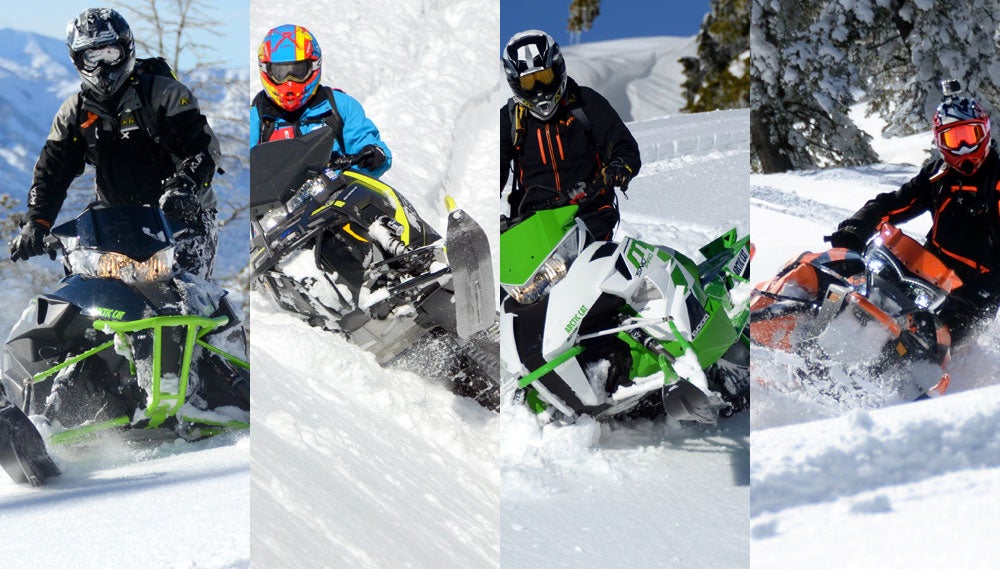
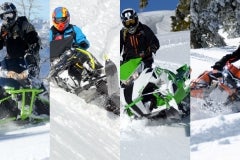
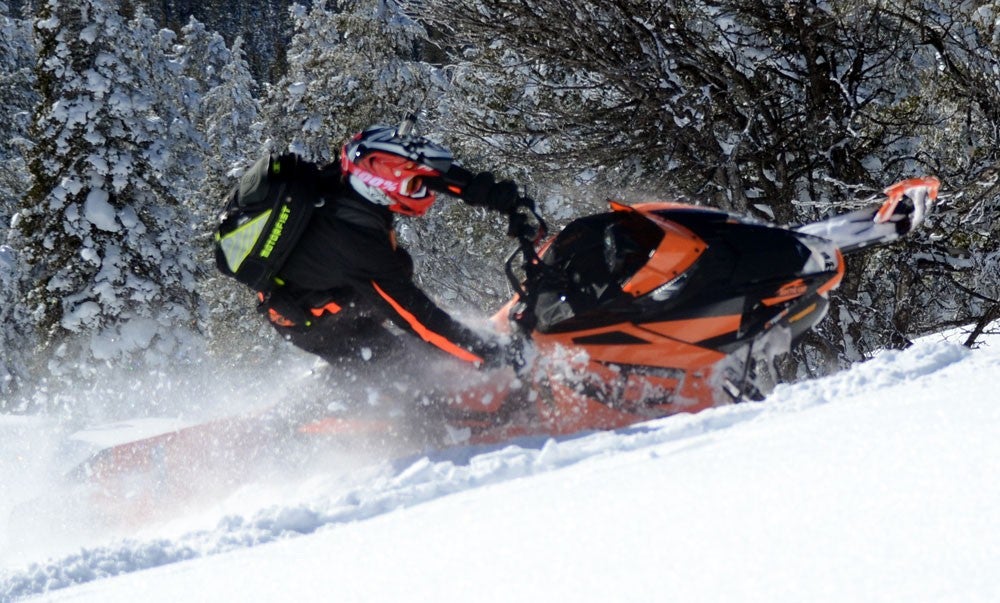
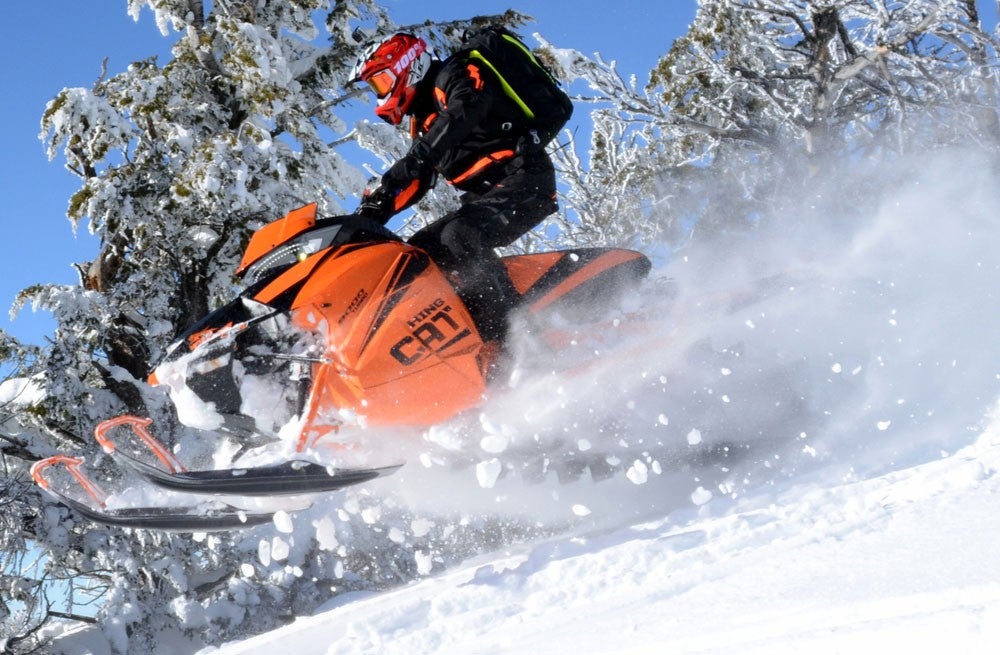
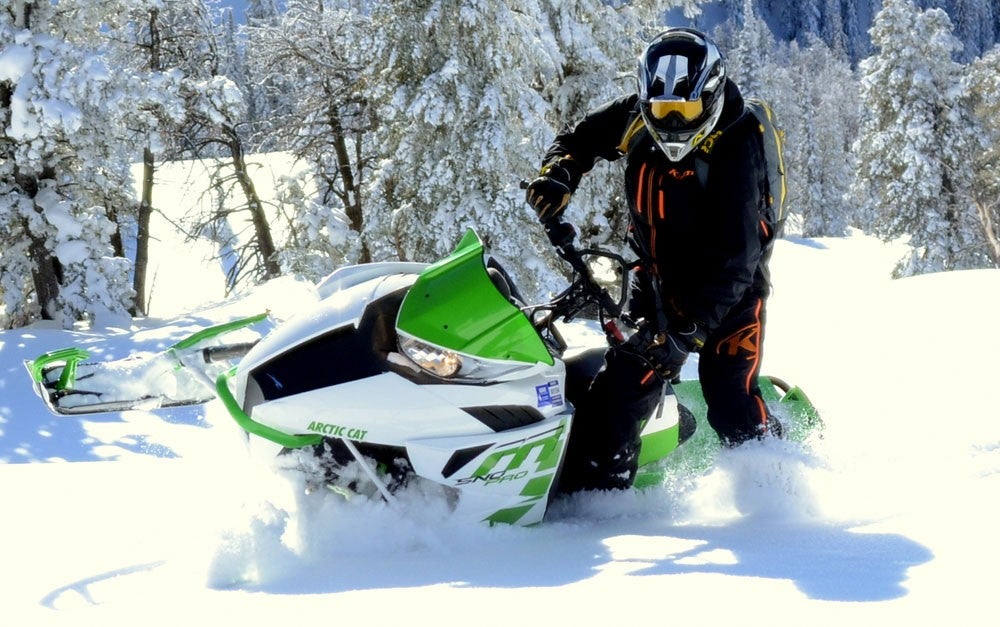
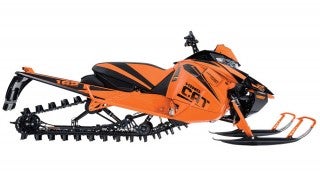
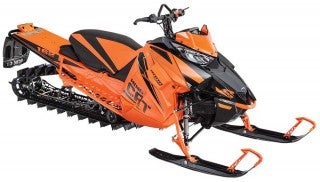
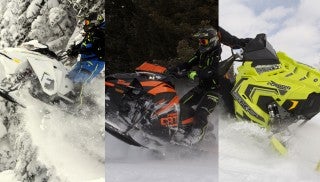


 Your Privacy Choices
Your Privacy Choices